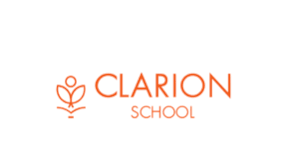Information
-
Audit Title
-
DPC#
-
Location
-
Add media
-
Conducted on
-
Prepared by
-
Add signature
-
Title
-
Document No.
FIRE
-
Fire Prevention Program Reviewed
-
Only metal fuel cans with flame/flashback arrestors are used (i.e. Safety Gas Can). No plastic fuel cans are allowed.
-
Compressed gas cylinders must be secured. If the cylinder includes a protective cap, the cap must be screwed on.
-
Welding / cutting equipment must be well maintained; hoses and cables not worn or damaged.
-
Acetylene and oxygen tanks must be stored at least 20 feet away from each other unless they are in use (on carts is considered in use). No more than one spare compresssed tank stored at the location.
-
All sprinkler control valve systems have the valves locked in the open position.
-
All dryer sprinkler systems have the water supply valves locked in the open position (with generic locks, not LOTO locks).
-
Fire sprinkler valves must have a clearance of at least 18 inches below and all around.
-
Oily rags used at the location (maintenance employees, etc.) must be stored in a proper metal or compliant fire rated safety can with a self closing lid.
-
No evidence of free liquids from reusable textiles such as shop towels that have oils, solvents, chemicals or other substances on them.
HazCom
-
HazCom Program Reviewed
-
OSHA 300 logs must be accurate, complete, printed and maintained for the past 5 years, plus the current year. (Acquisitions - if 5 years are not available, memo must be on file with explanation.)
-
OSHA 300A forms available for the past 5 years, with GM’s signature . If the form has been recreated to update changes, the original copy must be retained .
-
The G&K Hazard Communication SOP is reviewed annually, customized and located in the yellow OSHA Programs & Safety manual.
-
Hazard Communication / GHS training completed for all employees and documented on the G&K Training Verification form. This includes all new employees that have started work since the last GHS monthly training session.<br>
-
Complete incident documentation for all incidents. Incident documentation must include at a minimum the Manager's Immediate Notification and the Workplace Incident Investigation Report. Documentation will be audited against worker's compensation cases within the past year (STARS report).
-
All original chemical containers must have visible and legible manufacturer labels.
-
All secondary containers (chemicals/fluids not in original manufacturer’s container) must have legible NFPA hazard identification labels, or WHMIS Workplace Label for Canada, and the name of the product (i.e. Windex). This includes, but is not limited to, chemical containers such as drums and spray bottles.
Blood Borne Pathogens
-
BBP program reviewed
-
Hepatitis B Vaccination employee list is at the location and current. Locations must have on file either the Hep B Vaccine Declination form or vaccination status records for all employees with occupational exposure.
-
Employees with potential occupational exposure to BBP must be offered and receive vaccination or sign declination within the first ten working days.<br>
-
Written BBP Exposure Control Plan, current revision and standardized to the location is located in the yellow OSHA Programs & Safety manual.<br>
-
Employees with potential occupational exposure to BBP must be offered and receive vaccination or sign declination within the first ten working days.<br>
-
Monthly BBP Compliance Checklist is on file at the location for the past 12 months.<br>
-
Sharps containers are located in the soil sort area of the plant.<br>
-
The location has a disposal or cleaning method in place for contaminated PPE related to the BBP process.<br>
-
RED containers (slings, carts, etc.) are used solely for the BBP process.<br>
-
BBP Decontamination and cleaning process (cart, table, etc.) has been visually observed and verified to be in compliance with SOP<br>
PPE
-
-
Annual PPE hazard assessment matrix completed and reviewed for all applicable positions.
-
Signed "Respiratory Protection - Voluntary Usage Practice form" is on file for any employee who requests to use an N95 respirator. This form is not required annually.
-
PPE training completed annually including sign-in documents and learning assessment.
-
Employees observed are wearing all required PPE as outlined by G&K PPE Minimum Requirements and any local requirements.
-
PPE training completed annually including sign-in documents and learning assessment.
-
Annual PPE hazard assessment matrix completed and reviewed for all applicable positions.
Safety Awareness Board













